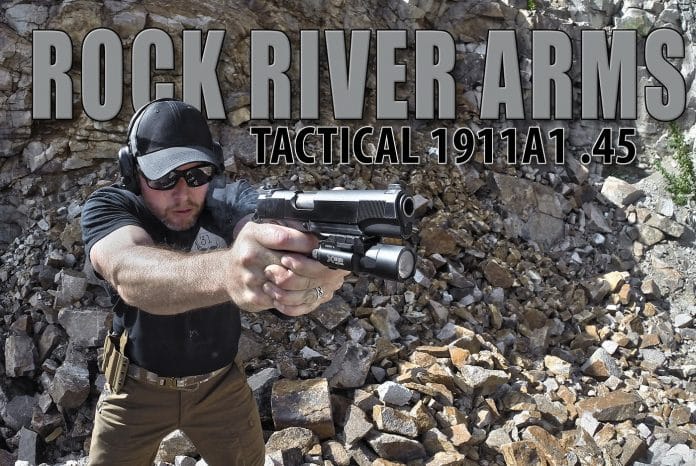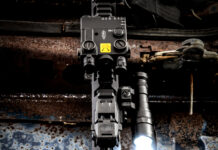Rock River Arms is famous for their iterations of two classic American martial firearms, the AR-15 and the 1911. In the latter case, Rock River’s .45 autos made their bones at Camp Perry, where their accuracy and reliability endeared them to bulls-eye shooters. Take one of those excellent pistols, make sure the tolerances will allow it to run reliably under duty conditions, put on some sights suitable for defensive purposes, and add a light rail to the dust cover: Voila! You have Rock River’s new Tactical 1911-A1 .45 ACP ($2,200).
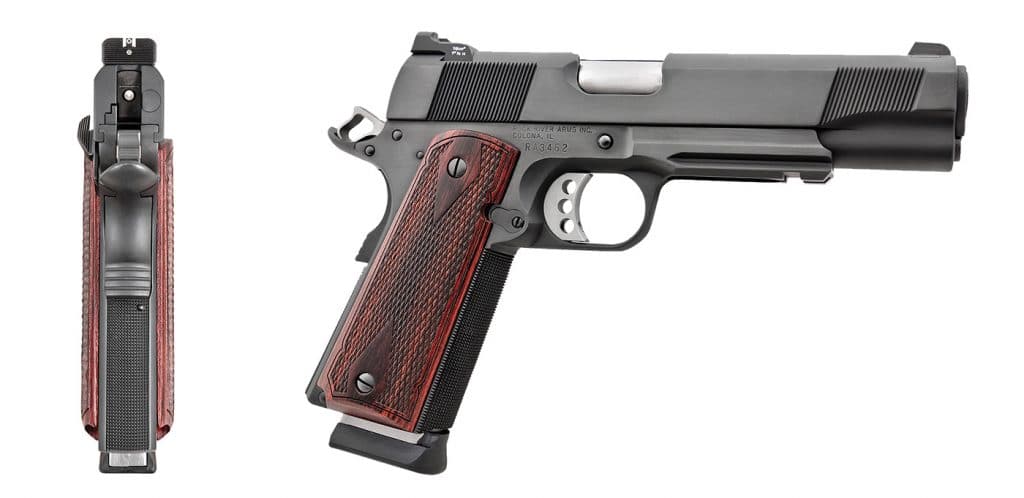
The sights are an excellent choice for a pistol bearing the “Tactical” moniker, to wit, the excellent Heinie Ledge, so called because the shape of the rear sight gives a ledge which allows a user with only one hand left to fight with a way to rack the slide against a belt or holster using this contact point. The front post and the rear each have one Trijicon night sight ampoule, aimed by setting the front above the rear in Richard Heinie’s famous “Straight Eight” configuration.
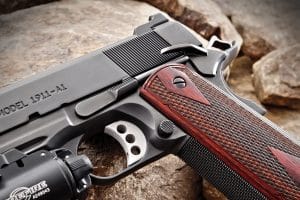
Kart match barrels are famous for their accuracy and quality. That’s what you find in the Rock River Tactical, perfectly installed for optimum function.
The recoil system is John Browning’s time-proven original, which gets a big thumbs up from this reviewer. The thumb safety is sized well for fast use, but is mounted on the side only. The speed hammer and beavertail grip safety with “speed bump” worked perfectly even with a high-thumb grasp, which on many 1911s fails to activate the grip safety. Not so on this one.
I would have preferred an ambi thumb safety and could have done without the forward slide grasping grooves. That, of course, is subjective. I found the thumb safety stiff to engage to the “on-safe” position at first, but within the first day of “git ‘er up on target an’ shoot,” it wore in just fine.
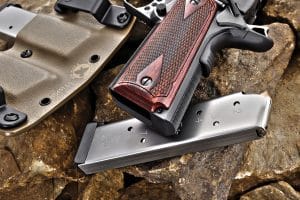
On the Lyman digital scale, the trigger pull weight averaged 4 lbs, 10.9 oz., but felt lighter, an indication of a well-made gun with a smooth pull. Four pounds even is generally considered red-line minimum for a duty gun as opposed to dedicated target pistol in the 1911 platform, so the pull weight absolutely lived up to its “Tactical” name.
From five to ten yards, the RRA kept everything in one hole when I did my part slow fire (and did so faster at the closer distances). At 25 yards I went with my usual protocol: Caldwell Matrix rest on a concrete bench, and each five shot group measured twice to the nearest 0.05”. The first measurement was all five, showing what an experienced gunner could expect from a solid, braced position with no stress involved, and the second was the best three hits. We used three different brands of ammo, representing the most common bullet weights. The lightest was 185-grain Federal Classic JHP, and the numbers measured out so precise they looked made up. All five were exactly 2.50” apart center to center, and the best three measured exactly half of that at 1.25” on the nose. Point of impact centered slightly above and to the right of the aiming dot.
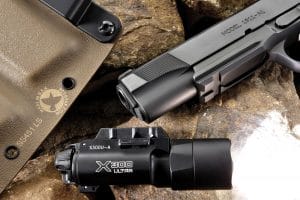
The middleweight bullet was the Sig Elite Performance V-Crown 200-grain JHP. Five of these formed a 2.95” group a tad above the aiming dot but centered for windage. The best three measured 1.70”.
Traditional “fodder” for the .45 ACP is 230-grain bullets, and since full metal 230-grain FMJ “hardball” is so popular in .45 ACP ya just gotta test some. Remington-UMC was the choice here, and it turned out to be the tightest-shooting of the three loads tested, in both measurements. All five went into 1.60”, and the best three formed a 1.15” group.
We ran over 300 hundred rounds through this gun without cleaning or lubrication. The only malfunction was a failure of a spent casing to completely clear the chamber. This occurred on the bench with the 185-grain Federal, the mildest load of the test. After that malf, I loaded up a magazine with a mix of hardball and JHP carry loads, and deliberately “limp-wristed” the RRA weak-hand only. All eight rounds cycled merrily through, leaving the pistol at slide-lock with no malfunctions.
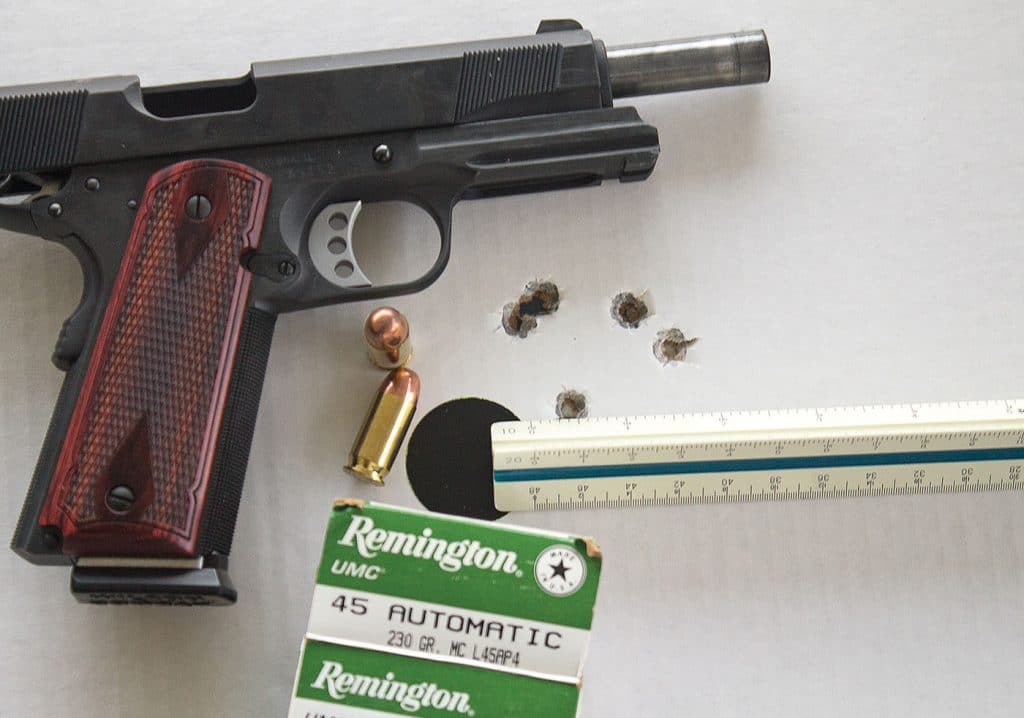
I wore the RRA .45 for an afternoon in a Blackhawk CQC composite scabbard, and for a full day in a Kydex holster by Green Force Tactical (greenforcetactical.com). No snags, no discomfort, no sharp edges, no problems at all. After testing, the Rock River Tactical had left not the slightest bit of soreness in the tester’s arthritic old hands. This is a user-friendly .45, to be sure. For more information contact Rock River Arms, Dept. OT; Tel.: (866) 890-ROCK; Web: www.rockriverarms.com
















